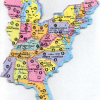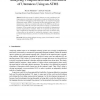1262 search results - page 31 / 253 » Diagnosis Problem Solving Using Fuzzy Relations |
100
Voted
CVPR
2001
IEEE
16 years 2 months ago
2001
IEEE
We approach the problem of 2-D and 3-D puzzle solving by matching the geometric features of puzzle pieces three at a time. First, we define an affinity measure for a pair of piece...
125
Voted
FSS
2011
14 years 7 months ago
2011
We review two existing interpretations of fuzzy random variables. In the first one, the fuzzy random variable is viewed as a linguistic random variable. In the second case, it re...
AIED
2005
Springer
15 years 6 months ago
2005
Springer
Analyzing coverage of a student’s utterance or essay (completeness) and diagnosing errors (correctness) can be treated as a diagnosis problem and solved using a well-known techni...
105
click to vote
COLT
2003
Springer
15 years 6 months ago
2003
Springer
Abstract. We study the problem of learning partitions using equivalence constraints as input. This is a binary classification problem in the product space of pairs of datapoints. ...
117
click to vote
RSEISP
2007
Springer
15 years 6 months ago
2007
Springer
The current research in granular computing is dominated by set-theoretic models such as rough sets and fuzzy sets. By recasting the existing studies in a wider context, we propose ...


